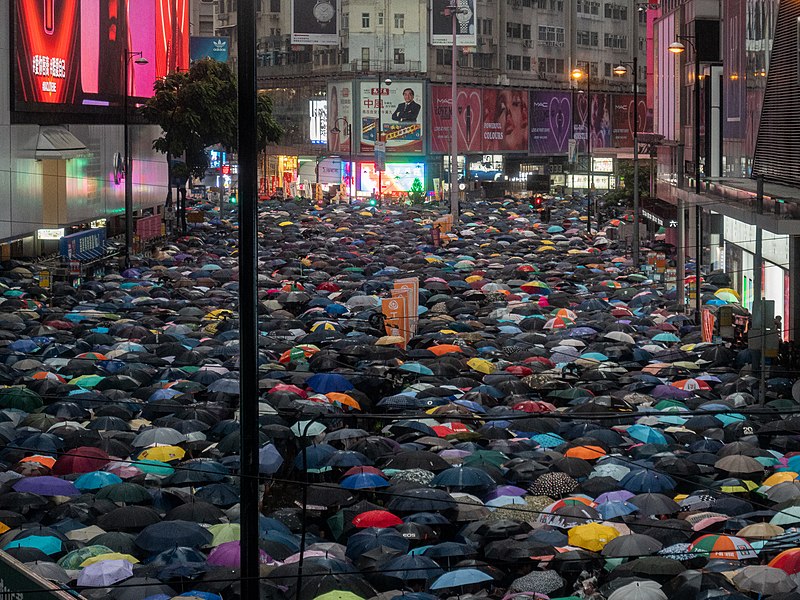Tear gas, rubber bullets and water cannon have been used by Hong Kong riot police to disperse crowds as tens of thousands marched in the city, defying a ban.
Protesters lit fires, threw petrol bombs at riot police and attacked the parliament building.
An event to mark five years since Beijing ruled out fully democratic elections was banned in Hong Kong, a special administrative region of China.
On August 30, several key pro-democracy activists and lawmakers were arrested.
The protest movement grew out of rallies against a controversial extradition bill – now suspended – which would have allowed criminal suspects to be sent to mainland China for trial.
It has since become a broader pro-democracy movement in which clashes have grown more violent.

Hong Kong Extradition Protests: Tear Gas Fired at Demonstrators Gathered in Mong Kok
Hong Kong Protests: Tear Gas Fired at Unauthorized Yuen Long Rally
Hong Kong Protests: Hundreds of Demonstrators Storm Parliament Building on Anniversary of Chinese Rule
Demonstrators took to the streets in the Wan Chai district, many joining a Christian march, while others protested in the Causeway Bay shopping district in the pouring rain. Many carried umbrellas and wore face masks.
On the 13th weekend of protests, demonstrators – chanting “stand with Hong Kong” and “fight for freedom” – gathered outside government offices, the local headquarters of China’s People’s Liberation Army and the city’s parliament, known as the Legislative Council.
In the Admiralty district, some demonstrators threw fire bombs towards officers. Earlier, protesters marched near the official residence of embattled leader Carrie Lam, who is the focal point of much of the anger.
Police had erected barriers around key buildings and road blocks, and fired tear gas and jets of blue-dyed water from the water cannon. The colored liquid is traditionally used to make it easier for police to identify protesters.
The recent demonstrations have been characterized as leaderless.
On August 30, police had appealed to members of the public to cut ties with “violent protesters” and had warned people not to take part in the banned march.
Police made a number of arrests on August 31.
During a 24-hour police crackdown, at least three activists – including prominent 23-year-old campaigner Joshua Wong – and three lawmakers were detained.
Joshua Wong, who first rose to prominence as the poster boy of a protest movement that swept Hong Kong in 2014, was released on bail after being charged over the protests which have rocked the territory since June.
Hong Kong is part of China, but enjoys “special freedoms”. Those are set to expire in 2047, and many in Hong Kong do not want to become “another Chinese city”.
Beijing has repeatedly condemned the protesters and described their actions as “close to terrorism”. The protests have frequently escalated into violence between police and activists, with injuries on both sides.
Activists are increasingly concerned that China might use military force to intervene.
On August 29, Beijing moved a new batch of troops into Hong Kong, a move Chinese state media described as a routine annual rotation.
